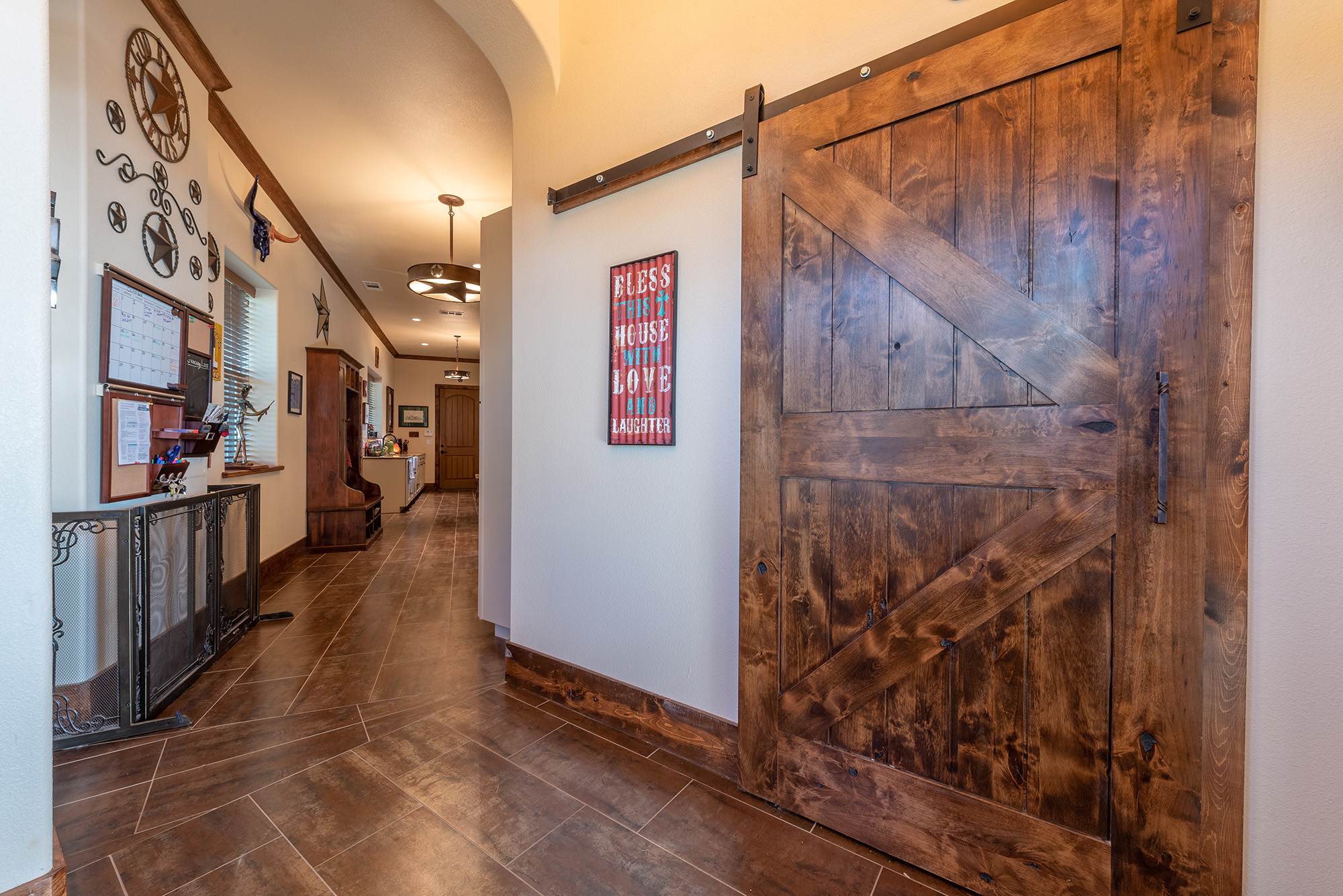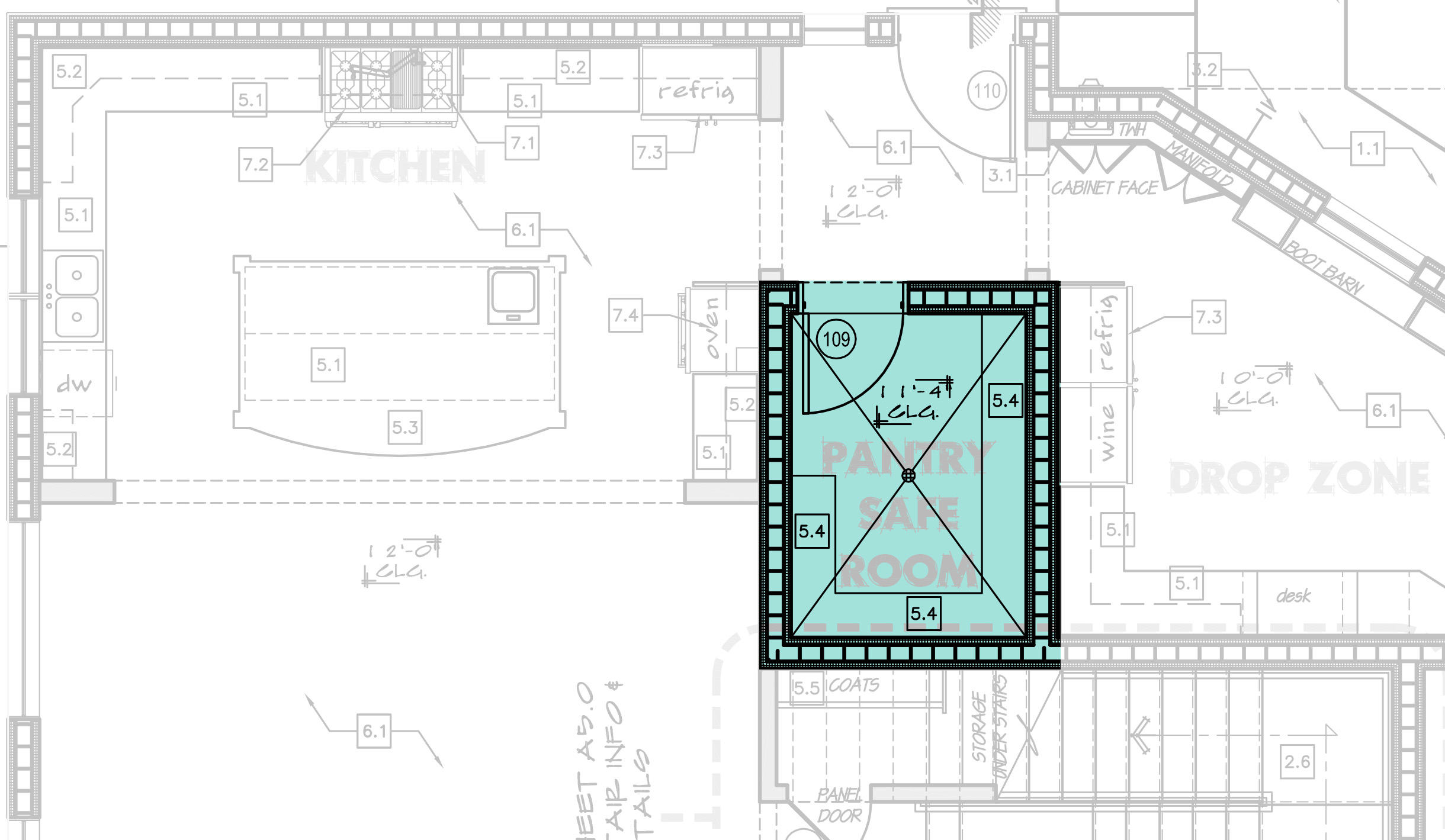
- Products
- Why Nudura
- Nudura Project Applications
- Training Academy
- Resources
- Company
How to Incorporate a Safe Room into Your Home with ICFs
Are you prepared for when an extreme weather watch turns to a warning? Impending storms are unpredictable, but you can proactively protect your home and your family by designing a garage, closet or even a kitchen pantry as a safe room.
A safe room, panic room or storm shelter is a fortified space that provides “near-absolute protection” to its occupants and could be the difference between life and death when a tornado, hurricane or earthquake hits. While it may be scary to think about and intimidating to initiate, Insulated Concrete Forms (ICFs) make this safety feature easily accessible for new and existing homes.
ICF Safe Rooms
Insulated Concrete Form construction is a highly effective method for building a FEMA-certified safe room or ICC 500-certified storm shelter. Known as being disaster-resilient, walls built using Nudura ICFs can withstand winds up to 250 mph (402 kph) and protect against flying debris, as proven in an impact test conducted at Texas Tech University.
For residential builds, Insulated Concrete Forms are typically only used for the exterior structural walls. Once the concrete cures, ICF walls are virtually impenetrable, so they are not frequently designed for interior walls in case the owners want to change the home's layout in the future. However, ICF safe rooms can be incorporated inside or outside a house and either above ground or below ground. What most people don’t know is that during non-emergent times, ICF shelters can perform a dual purpose and act as any other area of your home so there is no wasted space.
Functional Safe Room
Within your home’s design, you can build an ICF safe room to meet the FEMA or ICC 500 criteria and simultaneously function as a closet, pantry, laundry room, or any other room. And completed safe rooms do not have to look like stale concrete bunkers, since you can install drywall to the ICF walls to suit your desired aesthetic. Aside from the steel door requirement, there are no other visible features that would distinguish a certified safe room from a regular room. Plus, there are some creative ways to ensure your ICF safe room has the look you want with added peace of mind that you and your family are protected in the event of a natural disaster.
A 2019 ICF residence in Dallas, Texas built all their exterior walls with Insulated Concrete Forms, plus used ICFs on the interior for a combined ICF kitchen pantry and safe room. For daily use, they keep the steel door open with a sliding barn door across the opening to blend in with their home’s farmhouse style. A pantry is a very practical use for a safe room because it will already hold the food needed for any extended stays.

In a region of Alaska prone to intense winter storms and earthquakes, this ICF home was designed with resiliency and self-sufficiency top of mind. Inside, a custom ICF safe room serves as a secure gun room and will double as shelter in times of hazardous weather conditions. With potential power outages lasting for days, the home is armed with a back-up generator and the thermal efficiency of Insulated Concrete Form walls, so the homeowners can live comfortably off-the-grid.
Detached ICF Safe Rooms
For existing homes, a detached ICF garage, shed or guest house may be the simplest way to build a storm shelter as it requires no disruption to the current structure. As a stand-alone residential safe room, FEMA dictates that the ICF safe room should be located “within 150 feet of the nearest entrance of the residence” for quick access in an emergency. You can install the same exterior cladding to the ICF walls to match the adjacent building and add any finishes, appliances or furniture inside so it is fully operational.
Insulated Concrete Forms for Family Safety
Whether you decide to design a safe house or a specific storm shelter on your property, you can rest easy knowing that Insulated Concrete Form construction is the most reliable building method to ensure your home is a place of refuge for you and your family no matter what Mother Nature throws at it.
CONTACT US
We’re committed to supporting homeowners and design professionals who are interested in or use our products. We’re always happy to help and provide more information.






